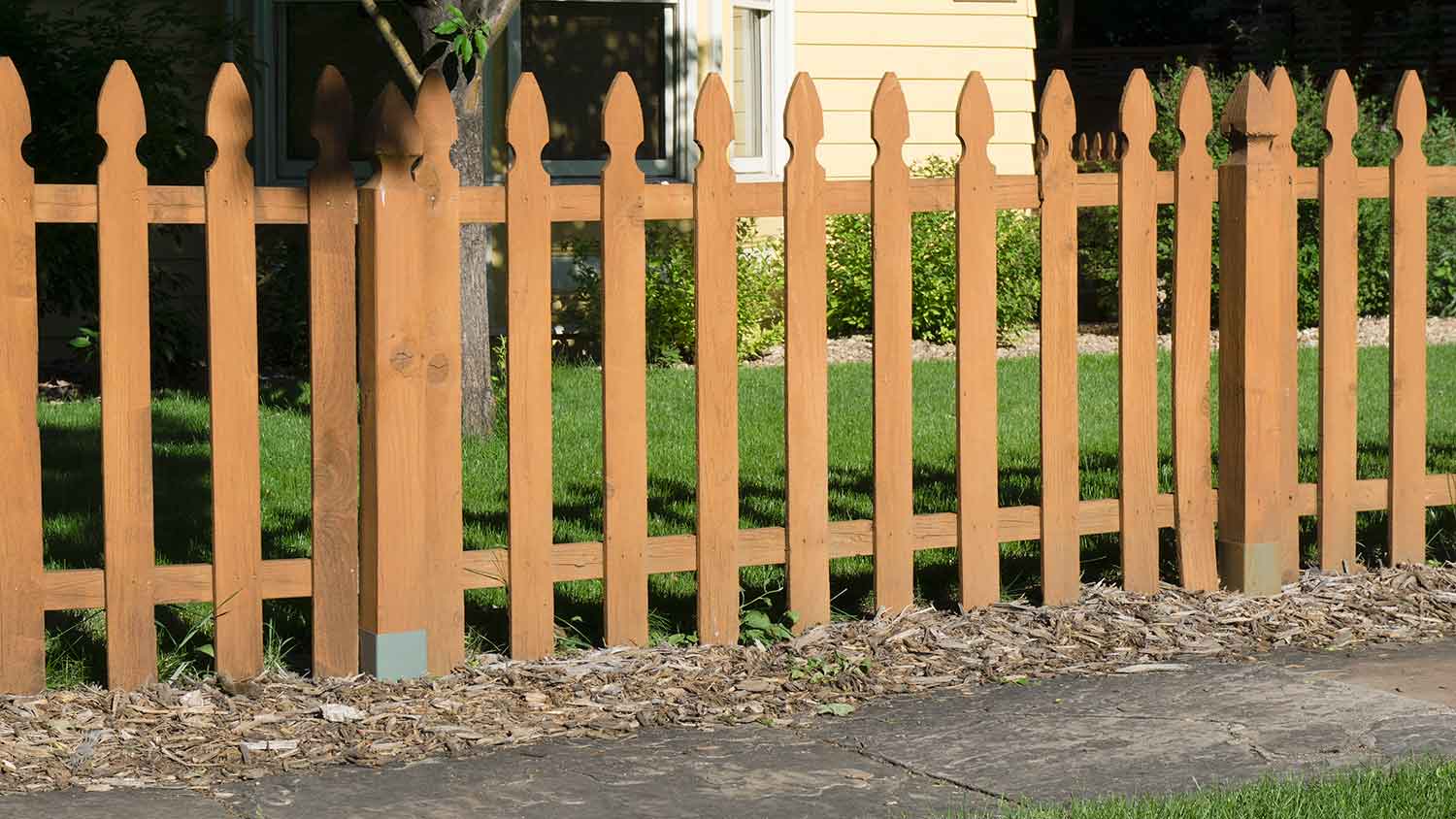How to Brace a Fence Post for Long-Term Stability
This extra step can make all the difference for your fencing


- Trowel
- Drill
- Level
- 2x4 board or similar size
- Shovel (a sharpshooter works best)
- Drainage gravel
- No-mix concrete
- Water
- 24- to 36-inch-long stake
- Screws
A fence is a major investment for your property, whether you’ve built it yourself or hired a professional. But eventually, the fence may start leaning or need a few post repairs. By learning how to brace a fence post properly, you’ll provide stability and sturdiness to your fence for years to come.
Prepping to Brace a Fence Post
It’s important to have your utility lines marked before you start digging so you don’t accidentally drill or dig into one and cause a big issue. You may also need to check local building codes and your HOA if you’re making major changes to your fence, like adding height for extra privacy, although bracing a few posts for repair shouldn’t require too many inquiries.
Bracing a fence post is much quicker and easier if you have a helper, so you may want to ask a friend for help.
To ensure stability, fence posts should typically be buried 2 to 3 feet deep.
Identify and Isolate the Sagging Fencepost
 Photo: SrdjanPav / iStock / Getty Images Plus / Getty Images
Photo: SrdjanPav / iStock / Getty Images Plus / Getty ImagesOver time, it’s not unusual for a fence post to start sagging. This can be due to soil erosion, the constant freezing and thawing of the ground, or rotting wood from exposure to all the wet conditions. You know it’s time to make repairs when you notice a post is leaning. Start by using your sharpshooter or other narrow shovel to dig around the sagging fence post.
Make sure the hole is deep enough that you have clearance for working. A general rule of thumb is to dig a hole about three times the width of the fence post. The depth should be around one-third to one-half of the height of the post. So, if you have a 6-foot post, you would make the hole close to 3 feet deep for the most stability.
Add Temporary Support
The next step involves adding temporary support to hold up the sagging post while you’re working on it, which you won’t remove until later in the process. Pound your stake into the ground about 4 feet from where the fencepost sags. Attach the support boards between the stake and fence. Use your level to ensure the fence is upright, and then secure it in place temporarily with screws. You can use the 2x4 board to tamp the dirt around each post.
Fill the Hole
 Photo: Catherine Falls Commercial / Moment / Getty Images
Photo: Catherine Falls Commercial / Moment / Getty ImagesWith the post in the hole and still supported by the temporary support, add about one-third of the gravel and tamp it down. Now it’s time to add the no-mix concrete made especially for post holes. Follow the instructions on the no-mix concrete and use it to fill the hole. Repeat for each fencepost you’re repairing.
Allow Concrete to Cure
Use your level to ensure your concrete mix is even, then adjust the amount if necessary. Once you have the area as even as possible, let the concrete cure. Keep misting the concrete mix with water, and use your trowel to neatly press in the mix around the posts.
Depending on how moist your soil is, you may need to add more or less water. If you run your trowel over the concrete a few times and it doesn’t smooth out, you will know it may be too dry. If your concrete is too wet, add more mix or wipe away the pooled, excess water with cloths.
Remove Supports and Cover With Dirt
Once the concrete has completely cured, you can remove your temporary supports. Finish off the look and support of the fence by adding soil over the post hole to hide the concrete.
DIY vs. Hiring a Pro
You may find the effort required to brace a fence post isn’t worth it, or it requires more DIY know-how than you’re comfortable with. If this is the case, you may choose to have a local fence installation and repair company take on the job for you. While costs range widely and depend on the length of the fence and the materials needed, fence repairs typically cost from $300 to $925.
Frequently Asked Questions
Fall and winter are ideal times of year for installing a fence. Not only is this a slower season for a fencing company (if you choose to hire a professional), but most of the plants and trees in your yard are dormant. Waiting until the fall and winter means you’re less likely to cause damage to your existing flora.
It depends on the side of the property the fence falls on when determining if you or your neighbor share the responsibility for the fence repair. However, many fences run along the property line, which means you and your neighbor share the fence, and you’re both responsible for repairs and can likely split the costs.















